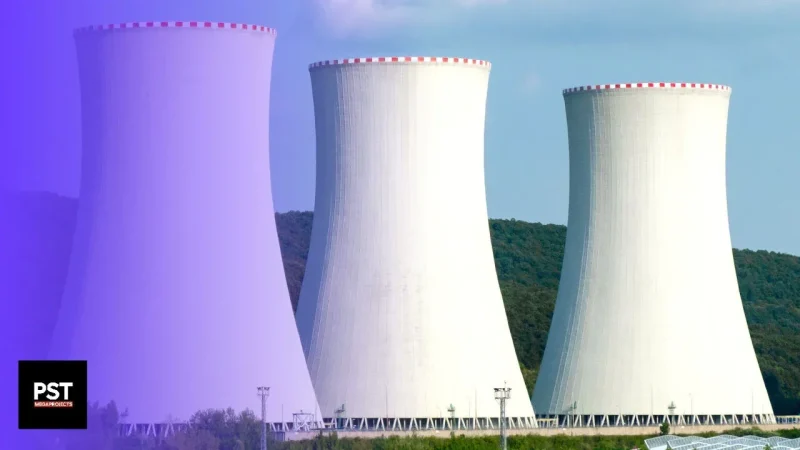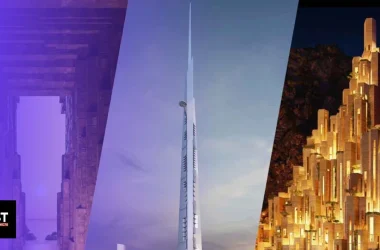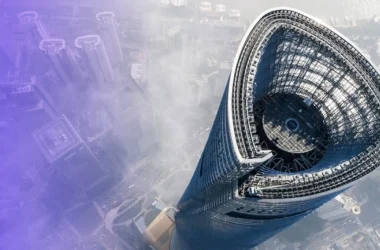When thinking about the most dangerous areas on the planet, most people might picture some place in the middle of the desert or Antarctica. But you’d be surprised to hear that, because of a particular nuclear plant, one of the most hazardous areas on Earth is actually at the heart of the UK.
This article is about the story of the nuclear plant Sellafield: a location that started as an ambitious national project and ended up becoming a horrendous pool of radioactive waste, threatening to cause a disaster on the same scale as Chernobyl or worse, which is why the UK is undertaking a miraculous $120 billion engineering project to deal with the problem.
How the Nuclear Plant Was Born
The story of Sellafield reaches all the way back to the 1940s. It’s common knowledge that nuclear weapons played a crucial role in ending World War 2. But its role wasn’t only limited to that. Countries all over the world scrambled to enter the nuclear race, fearing that the peace that followed the war wouldn’t last for long, and that the next time they would be too far behind in terms of nuclear power.
That was the original reason behind Sellafield. The construction began in 1947, and the nuclear plant started fully operating for the first time in 1950. Its sole purpose at the time was the generation of Plutonium, the substance used for the creation of atomic bombs.
Little did Britain know at the time that this ambitious project, aimed at the improvement of its military power, was actually a cancer beginning to spread. 70 years later, it’s now one of the most hazardous areas on the planet, threatening Britain itself before any other country.
This raises the question of how things got to this point, and whether the disaster could have been avoided.
In addition to the fact that Britain was in a rush at the time, everybody was going crazy about nuclear energy. In 1954 for example, Lewis Strauss, the chair of the US Atomic Energy Commission, predicted that nuclear energy would make electricity “too cheap to meter”. While it’s clear that this prediction hasn’t aged particularly well, it shows what people were thinking at the time.
The main reason why the expansion of our use of nuclear energy has been relatively slow isn’t that policymakers are unable to effectively advocate for it or that uranium is too difficult to find. The main hurdle is just that it’s too expensive to produce it safely: disposing of the extremely dangerous radioactive waste is one of the most complicated parts of the process.
For this reason, modern nuclear plants are built in accordance with extremely high safety standards that allow for the safe disposal of nuclear waste. The fact that the 1986 Chernobyl incident is one of the most well-known events in history testifies to the dangers involved in messing with nuclear power.
But things weren’t so clear back then. In 1979, Edward Teller, the father of the hydrogen bomb, declared that “waste disposal is a completely solved problem”. There is a point to what he said. It was already widely known throughout the nuclear industry that certain substances, like water and concrete, can provide good protection against radioactive waste. Teller’s declaration didn’t take into consideration that waste storage facilities would have to be maintained for an unfathomably long amount of time, and that with time, the facilities would begin to deteriorate.
As a result, Sellafield was nowhere near as safe and sturdy as modern plants. In expert jargon, decommissioning is the process of emptying a nuclear plant from all the fuel and waste inside it, and then restoring the area to a safe state. So, it basically means retiring a nuclear plant. Sellafield was not built with decommissioning in mind. It was built with the aim of containing nuclear waste indefinitely, with no clear plans for future waste removal.
This is clearly a case of extreme short-sightedness on the part of Britain’s government. The early signs of the plant’s unsafety already came in 1957, when a fire broke out in one of the reactors and caused one of the worst nuclear disasters in history. Around 240 cancer cases were linked to this incident.
The Nuclear Plant’s Current Condition
Over the years, everybody gradually realized that the situation in Sellafield was unsustainable, which led to the introduction of several safety measures. Argon gas was introduced to remove Oxygen from the air in case of any fire, and extra shields were built all over the plant.
But it was clear that this wasn’t enough, and Sellafield’s negative reputation kept growing. Other countries, like Ireland, also expressed their concern, because they would be affected by any large-scale disaster that could take place. In 2002, Britain’s prime minister received 1.3 million postcards from Ireland saying, “look me in the eye and tell me that I’m safe”.
In 2003, the plant’s activity was finally shut down, it became a facility for processing and decommissioning nuclear waste. But the aging structure of the plant only leaves one option: the removal of all nuclear waste from the site. Otherwise, Britain would have a massive pile of hazards sitting at its heart, ready to leak at any time.
In fact, leaks are not only a possibility; they have already been reported. In 2019, Sellafield reported a leak from the storage unit, which kept getting worse over the next two years. Additionally, a certain document reveals that 2.3-2.5 cubic meters of radioactive “liquor” has been leaking from the facility every day. Only the future will tell what could happen to those who live near the plant.
How to Decommission a Nuclear Plant
The UK Nuclear Decommissioning Authority, in collaboration with the American engineering company Bechtel, have started planning to perform this monumental task, described by many as one of the most complex engineering projects to be undertaken by humanity.
As things stand, the plant contains 800,000 gallons of intermediate radioactive waste; this is roughly the size of an Olympic pool. First, let’s talk about where this should be stored.
The only solution for the storage location issue we have right now is a Geological Disposal Facility, often called a GDF. It’s basically what you probably already expect: A gigantic hole located thousands of feet below the surface of the earth, designed to allow humans to dump tons of nuclear waste deep into the planet without having to worry about it anymore.
It should be obvious how enormous and expensive such an engineering project will be. What’s difficult about it isn’t just the process of construction itself, which requires digging thousands of feet into 1.9-billion-old rock, but also the amount of research that has to go into finding a good location. You can’t just decide to build a massive underground vault anywhere. You have to take into account the possibility of natural disasters like earthquakes and Tsunamis, in addition to rising sea levels and the stability of nuclear waste in the location.
To illustrate the scale of such a project, a look at what’s already been done in other countries should be instructive. In Finland, a warren of underground tunnels is currently being built, half a kilometer below the surface. It took almost four decades of research just to find a suitable location. The project is set to be finished in 2025 and will cost an estimated total of $5.5 billion. The tunnels will store up to 6,500 tons of waste and are expected to remain safe for a million years.
In New Mexico, an older and much smaller vault was built in 1999 to store intermediate-level waste. It’s supposed to house waste only for 10,000 years. If you’re wondering why that’s considered a small number, just keep in mind that radioactive materials can stay dangerous for 100,000 years or more.
The New Mexico vault is also a good example of the extreme measure that must be taken when building such a project. Fifteen years after it was completed, a human error caused radiation to rise for a kilometer or more above the ground. Vaults must be built with the goal of eliminating all possibility of error and disaster. The UK will sooner or later have to build its own GDF.
The Future of the Project
So much for the storage location, which the UK still hasn’t settled on. Moving on to the process of removal itself, a 500-ton crank is going to be used to move the nuclear waste bit by bit into specially built containers that will then be transported to their designated location. In 2023, waste removal finally began, and the first phase of the project is set to be completed in 2035.
But this is only one small step toward the goal: the project will likely not be finished before the 2150s! This is a massive long-term investment in the future health of millions of people; none of those who started it will see it finished. We shouldn’t be surprised to hear that the total estimated cost of this massive investment will exceed $120 billion. Hopefully, it will be well worth the cost.
Disclaimer
Please visit and read our disclaimer here.









